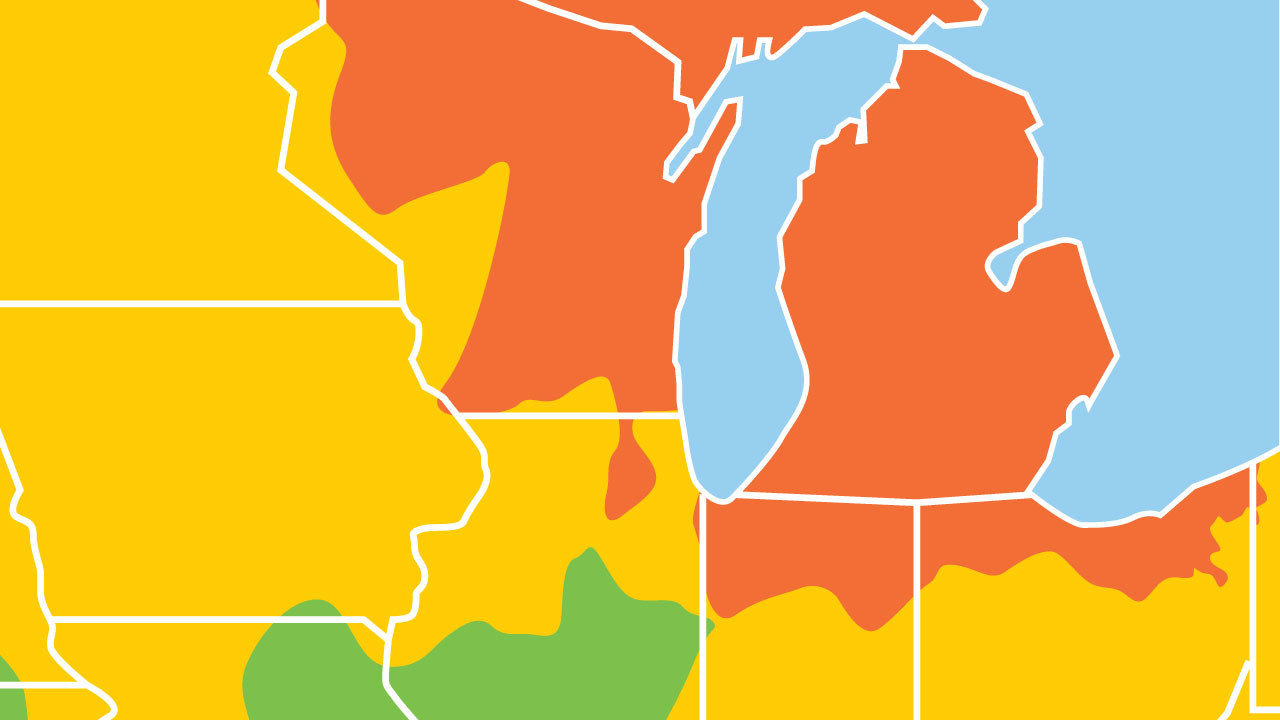Key takeaways:
- Wisconsin has faced some of the worst air quality in the nation this summer, with Milwaukee topping 200 AQI (“Very Unhealthy”) and multiple statewide advisories from the DNR.
- Wildfire smoke introduces microscopic particles that worsen congestion, facial pressure, and sleep disruption—especially for those with chronic sinus issues or allergies.
- ADVENT’s airway-breathing care, including balloon sinuplasty and turbinate reduction, restores nasal function so your body can filter irritants more effectively.
If you’ve stepped outside in Wisconsin lately and noticed a hazy sky or a scratchy throat, you’re not alone. Across the state, residents are dealing with some of the worst air quality in recent memory, and it’s not just a nuisance, it’s affecting how we breathe, sleep, and feel.
Right now, air quality alerts remain active in parts of the state. Milwaukee recently recorded the highest AQI in the nation, topping 200 (“Very Unhealthy”) according to FOX6 Milwaukee. Madison wasn’t far behind, with AQI readings peaking around 171, and much of eastern and southern Wisconsin is seeing lingering smoke and haze. The Wisconsin DNR has issued multiple advisories this season urging everyone, not just sensitive groups, to limit outdoor activity.
Whether you're in southeast Wisconsin, near Madison, or up north, this smoke is hitting home. And it’s part of a bigger trend. With more frequent smoke invasions each summer, Wisconsin continues to be on the frontlines of poor air quality caused by wildfires to our north.
What Wildfire Smoke Does to Your Nose and Sinuses
The smoke outside isn’t just unpleasant. It’s made up of microscopic particles (PM₂.₅) that sneak past your body's natural defenses when your nose isn't doing its job. For those with chronic sinus issues, nasal congestion, or structural blockages, the impact is even worse.
Across Wisconsin, people are reporting:
- Facial pressure and headaches
- Worsening sinus congestion
- Difficulty breathing and shortness of breath
- Dry mouth and sore throat from mouth breathing
- Increased post-nasal drip or coughing
- Itchiness around the eyes
Why? Because when your nose is blocked or inflamed, it can’t filter the air properly, and your body feels the effects. Some turn to over-the-counter remedies, but the relief is often temporary. The deeper issue may be an airway that’s already compromised, and wildfire smoke is just making it worse.
“Patients may experience worsening nasal congestion, post-nasal drip, sneezing, coughing, or generalized breathing discomfort, especially if these symptoms appear or are exacerbated when air quality is poor (such as during high pollen days or wildfire smoke events),” said Ruben Apgar, NP, of ADVENT Wauwatosa. “Those with a history of chronic sinusitis, allergies, or airway inflammation are particularly sensitive.”
Why This Also Disrupts Your Sleep
If your sleep’s been off lately, wildfire smoke could be to blame. Smoke-related congestion can make it harder to breathe at night, especially for those who snore or live with sleep apnea. Even if you don’t normally have sleep issues, the irritants in the air can leave you tossing and turning, waking up with a dry throat, or struggling to feel rested in the morning.
When your nasal passages are blocked, whether by inflammation or anatomy, your body has to work harder to breathe. And smoky air adds another layer of resistance.
Protecting Your Breathing During Air Quality Alerts
During ongoing air quality alerts, to protect your airway-breathing structures:
- Rinse with saline daily to clear smoke particles and soothe nasal tissue
- Use a HEPA air purifier, especially in your bedroom
- Wear an N95 mask outdoors, especially in high-smoke areas like Milwaukee or along the Lake Michigan shoreline, where lake breezes can trap pollution
- Stay indoors during alert periods, and keep your windows shut
- Replace HVAC filters with MERV-13 or higher for better air capture
- Watch for worsening symptoms like persistent pressure, congestion, or sleep disruption. These may be signs it’s time to get professional help
The Wisconsin DNR emphasizes that even healthy people can feel the effects of the current smoke levels, and people with existing airway issues, like chronic sinusitis, allergies, or airway inflammation, are especially sensitive.
How ADVENT Helps You Breathe Well
Wildfire smoke is out of your control, but the ability to breathe through your nose shouldn’t be. At ADVENT, we focus exclusively on airway-breathing, starting with the nose. If you’re struggling to breathe, snore more during smoky nights, or rely on your mouth to get enough air, it could be time to look deeper at what’s blocking your airway.
Our office-based solutions, like balloon sinuplasty or turbinate reduction, are designed to open up your nasal passages, restoring your body’s natural air filter. Because when your nose works properly, it helps protect you… even from the wildfire smoke outside.
“Restoring proper turbinate function helps the nose filter and humidify the air more effectively, offering protection from environmental irritants,” Apgar noted. “For patients with seasonal or environmental allergies, we also offer immunotherapy, which helps the body build long-term tolerance to specific allergens,” Apgar added.
If wildfire smoke is making your sinus symptoms worse, or you’re tired of poor sleep and mouth breathing, it may be time to get help. Schedule an appointment at one of our Wisconsin locations.
References
Apgar R. (2025). Personal interview.
Cleland P. (2025). Personal interview.
Country Herald. (2025, August 1). Wisconsin air quality alert: Wildfire smoke pushes PM₂.₅ to unhealthy levels through Friday. https://countryherald.com/news/wisconsin-air-quality-alert-wildfire-smoke-pushes-pm2-5-to-unhealthy-levels-through-friday/
FOX6 News Milwaukee. (2025, August 4). Wildfire smoke, Wisconsin air quality alert extended again. https://www.fox6now.com/weather/wildfire-smoke-wisconsin-air-quality-alert-through-weekend
Wisconsin Department of Natural Resources. (2025, July 31). Wisconsinites: Limit time outside due to Canadian wildfire smoke. https://dnr.wisconsin.gov/newsroom/release/112291
Wisconsin Public Radio. (2025, April 25). Report finds wildfires, heat have worsened Wisconsin air quality in recent years. https://www.wpr.org/news/report-wildfires-heat-worsened-air-quality-wisconsin
Wisconsin Public Radio. (2025, June 4). Southern Wisconsin is seeing some of the worst air quality nationwide Wednesday. https://www.wpr.org/news/southern-wisconsin-some-of-worst-air-quality-nationwide


